What is Live Chat? Definition,
Key Features, Use Cases
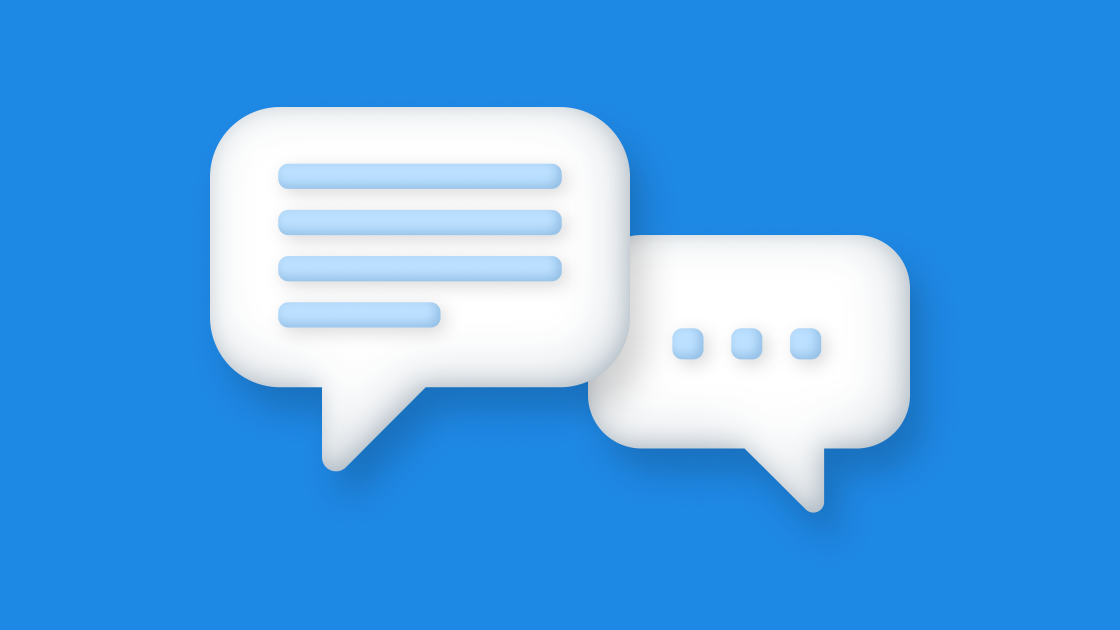

Have you ever seen websites with live chats? We bet you have! You are already on such a website right now.
Look at that small icon in the lower right corner: this is exactly what is called live chat, or at least what it looks like from your side. But in fact, there’s something more behind that small button. Let’s have a closer look at what live chat software is, how it works, and why businesses use it on their websites.
Table of contents:
Live chat is online communication software that allows businesses to chat with their website visitors in real time.
In some ways, it is similar to the instant messengers we use in our everyday life — Facebook Messenger, WhatsApp, Telegram, etc. The difference is that live chat is installed directly on a website, doesn’t require visitors to install a separate app, and offers much more functionality than regular messengers.
Live chat communication always involves two parties: visitors and representatives of the company that installed the live chat on their website. Company representatives who respond to visitors in the chat are called operators or agents.
Although visitors and operators communicate with each other via the same software, they see completely different things.
You already know what live chat looks like from the visitor’s side — a small messenger-like widget that can be opened by clicking on the chat button in the corner of a page. Just like WhatsApp or Telegram, it allows you to send instant messages, use emojis, or attach files.
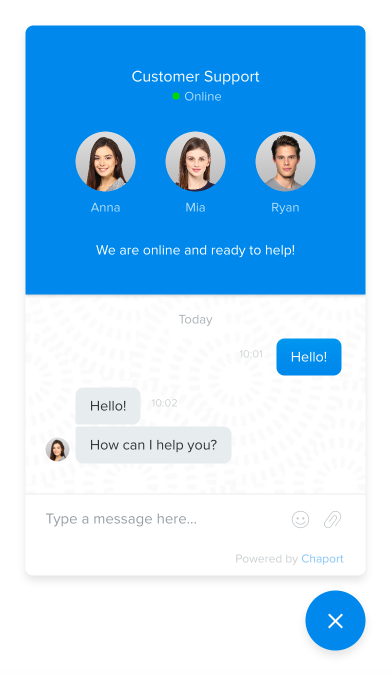
Chaport chat widget
If we look at the live chat through an operator’s eyes, we will see something more complicated. To answer chats, the operator needs to log in to a dedicated app. Most often, this app can be opened in a regular browser. Some live chat software solutions also provide desktop and mobile apps.
All incoming chats are displayed in a single dashboard. When the visitor sends a message via live chat, the operator immediately receives a notification and can reply to the chat. It looks something like this:
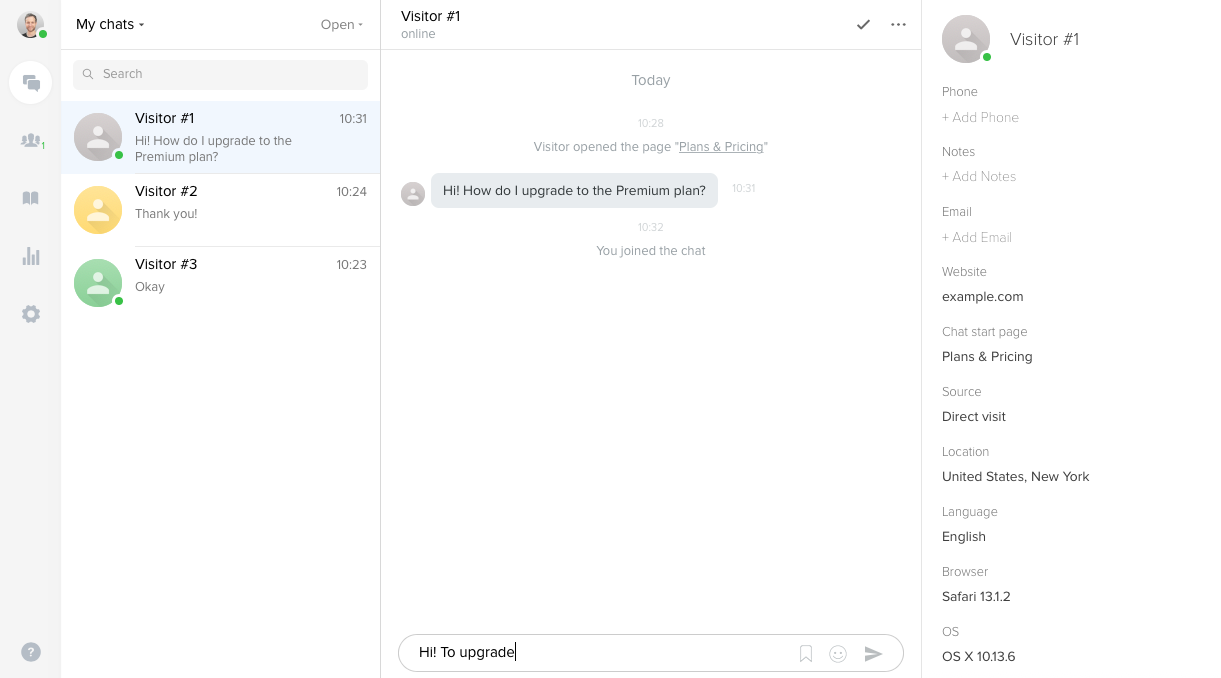
App for live chat operators in Chaport
Unlike the visitor, the operator has access to many more options. For example, they can see information about the visitor, leave notes, or transfer chats to other operators. We’ll discuss the key live chat features available to operators below in the next part of the article.
In addition to managing chats, operators can also manage settings, such as chat widget customization, assignment rules, and other options.
Live chat apps are designed specifically for communication between businesses and customers. To help businesses communicate with customers more effectively, live chats provide advanced features that are hardly found in regular messengers. Let’s see what features are available in modern live chat tools.
To attract more customers, businesses can send them proactive chat messages. Some live chat tools allow operators to manually initiate conversations with website visitors. It is also possible to set up automatic messages to encourage visitors to chat with you.
Most often, live chat apps provide an option to send proactive chat messages after a specific amount of time a visitor spends on a website. Some live chat solutions allow using more advanced triggers, e.g., the number of pages viewed, a visitor’s country or language, or a referrer URL.
Such a proactive approach helps businesses increase the number of conversations and generate more leads and sales.
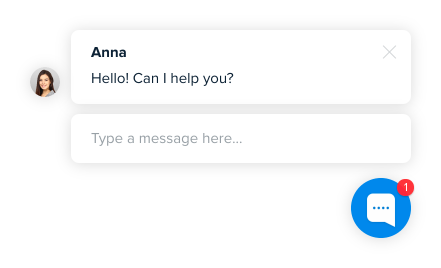
A pre-chat form is a great way to collect information about visitors. It is displayed to visitors before starting a chat and can be used to request visitors’ names, emails, or anything else.
If you use a pre-chat form on your website, note that a large number of required fields may significantly reduce the number of incoming chats. We recommend minimizing the number of fields or adding an option to skip them.
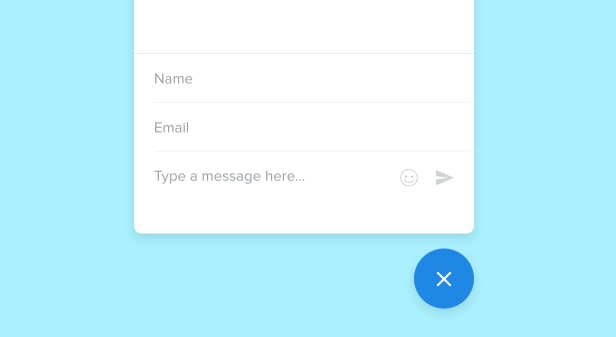
If there are several operators in the team, there’s usually an option to transfer chats to other operators. This feature is useful if a visitor requires extra help from another department or when the operator finishes their shift.
Plus, some live chats allow group chats where several operators can chat with the visitor and provide support together.
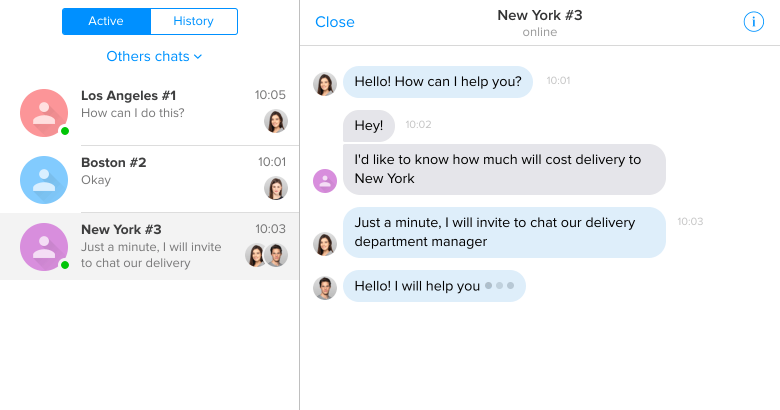
Incoming chats can be distributed among operators in various ways.
The simplest one is manual distribution. In this case, all new chats are considered unassigned and are displayed to all operators. As soon as one of the operators joins a new chat, it becomes assigned to that operator.
Perhaps the most common way is round-robin routing, which automatically and evenly distributes chats among all operators.
There are also assignment methods with more complicated rules. For example, chats can be routed to the right operator based on the page on which the visitor started the chat, the department to which the visitor applies (sales, support, etc.), the visitor’s language, and other criteria.
Operators can view information about the visitors they chat with. Usually, live chats automatically provide such data as the visitor’s country, browser language, and the pages the visitor is browsing on the website.
Operators also see the information collected through a pre-chat form or other data collection tools. Plus, it is possible to automatically pass the available information to the chat from other platforms, e.g., from CRM software.
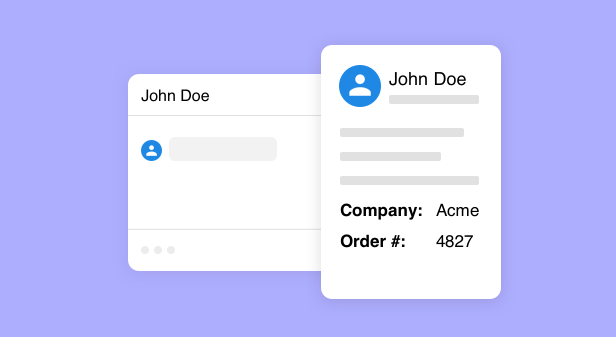
One powerful live chat feature is the ability to see what visitors are typing in real time before they send the messages. Here, in Chaport, we call this feature “typing insights”. On other platforms, it may also be called “message sneak peek” or “typing preview”.
This feature can be of great help to operators. Sometimes, customers may take too long to type the message, or they may even delete it altogether without sending it. Typing insights provide a better understanding of customers’ intent and allow operators to start drafting a reply in advance.
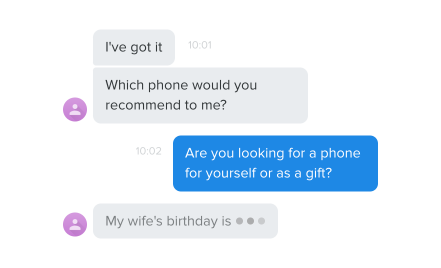
Canned responses are message templates with replies to common questions. Operators can easily access them with a single click or a shortcut during a conversation.
This feature enables operators to answer customer queries faster and eliminates the need to type the same answers over and over again.
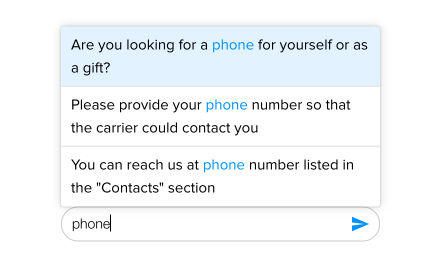
During a chat, operators can leave internal notes about the customers and leads they are talking to. It’s a great way to share important information with teammates and leave reminders for future reference.
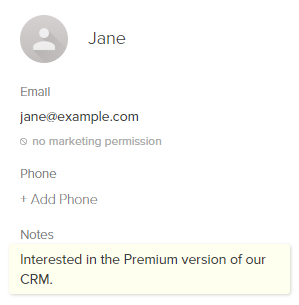
Many live chat apps allow sending chat transcripts — copies of conversations between live chat operators and visitors. Chat transcripts can be sent to the email addresses of operators or visitors. This feature is especially useful for customers, as it allows them to save important information from the correspondence and refer to it when necessary.
Sometimes operators have to deal with aggressive users or spammers. To stop receiving annoying messages, operators can ban troublesome visitors so that they can no longer send messages or see the chat widget.
These surveys are sent to visitors to collect their feedback at the end of the conversation. The most common way to measure customer satisfaction is to offer visitors the option to rate chats with operators or leave comments on the service.
Modern live chat tools allow creating custom chatbots or integrating with third-party chatbot solutions. Bots are a great way to automate customer interactions and increase the efficiency of the team. Companies can use them to initiate chats with visitors, collect information, and handle frequently asked questions.
Just like proactive chat messages, chatbots work according to specified triggers. They will make interaction with customers more personalized and relevant.
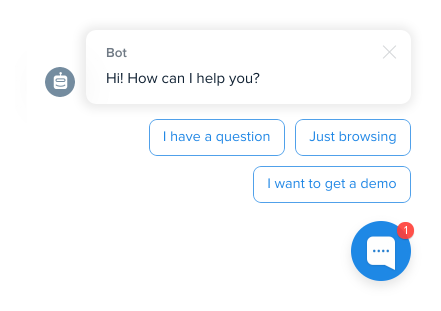
To help businesses track their chat and operator activity, live chat apps provide reports and analytics. The information contained in reports may differ depending on the live chat provider. This may include the total number of chats, engagement rates, response times, operator working hours, chat ratings, and more. Some live chat software solutions can also provide custom reports on demand.
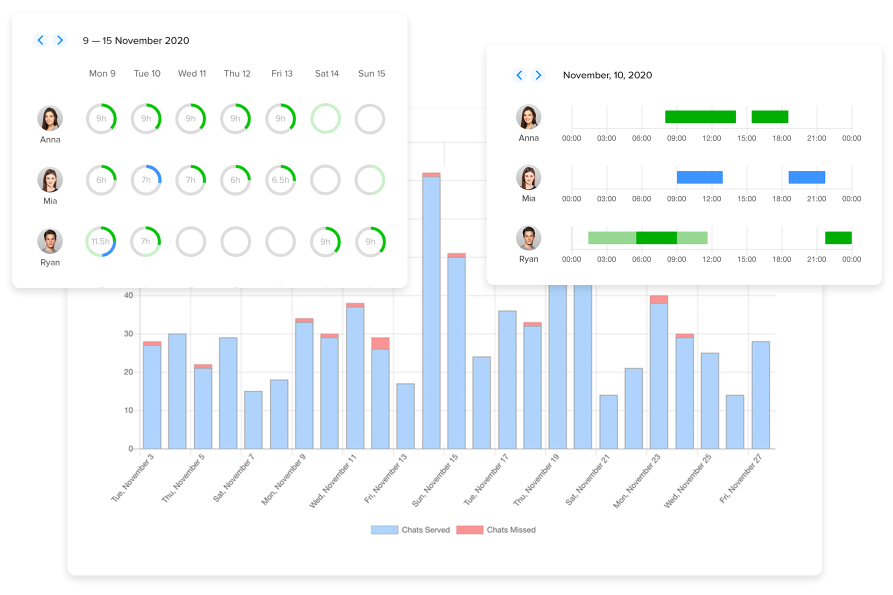
Today, live chat is one of the most popular channels that enable communication between businesses and customers. It has become an integral part of many websites, and the number of companies using live chat is constantly growing.
Businesses can use live chat for various purposes. Here are the key use cases:
This is probably the most common use case for live chat. Thanks to its accessibility and convenience, live chat is a perfect customer support tool that offers benefits for both customers and businesses.
Compared to traditional support channels like phone or email, live chat offers the fastest response time, which is highly appreciated by any customer.
For businesses, live chat helps optimize support processes. Thanks to multiple useful live chat features (which we discussed earlier), companies can make their support faster and more effective. These include canned responses, typing insights, chat transfers, chat assignments, and more.
Plus, live chat offers a high level of flexibility, allowing operators to handle multiple chats at a time and making it easy for customers to do other things while chatting with an operator.
It is also worth mentioning that live chat allows businesses to provide proactive support. Instead of just waiting for customers to have an issue and contact support for help, companies can take the initiative and offer help before the issue occurs. This is where proactive messages and triggers come in handy to reach customers in the right place at the right time.
Providing support is not the only way a business interacts with customers. Just because a customer makes a purchase doesn’t mean you can forget about them and relax. It is important to maintain relationships with customers and keep them engaged.
Live chat helps businesses stay connected to their audience. If you want to increase your customer engagement, use automatic messages to make announcements, inform customers about upcoming sales, or share useful content.
To entertain customers, you can use chatbots. They will interact with your customers even when you go offline.
Generating leads from a website can be a challenge for many businesses. Adding live chat to your website will help strengthen your lead generation strategy.
First of all, live chat helps attract visitors’ attention and stimulate interest in your products and services. Here again, targeted proactive messages can be put to good use, allowing you to initiate interaction with a prospect.
You can use automatic messages to promote your special offers, deliver targeted product recommendations, or simply welcome visitors and invite them to chat.
After that, live chat is an effective tool to collect lead information. You can automate this process using a pre-chat form and chatbots. Once the information is captured, it can be transferred to your CRM software, email marketing system, or directly to your sales team.
Finally, live chat allows you to nurture leads through natural conversation. With live chat, businesses can engage with their audience in real time, offer the help they need in a timely manner, and guide them down through the sales funnel.
Don’t have live chat yet but want to start talking to your customers? Today, adding live chat to a website is easier than ever!
For example, in Chaport, you can install the live chat in a matter of minutes. All you need to do is create a Chaport account and insert a small code snippet into your website’s source code.
If your website is on WordPress, Joomla, or Ecwid, the installation is even easier, as you can use our official plugins.
Once the installation is complete, a small chat icon will appear in the bottom right corner of your website. Now, you are ready to communicate with your visitors!
